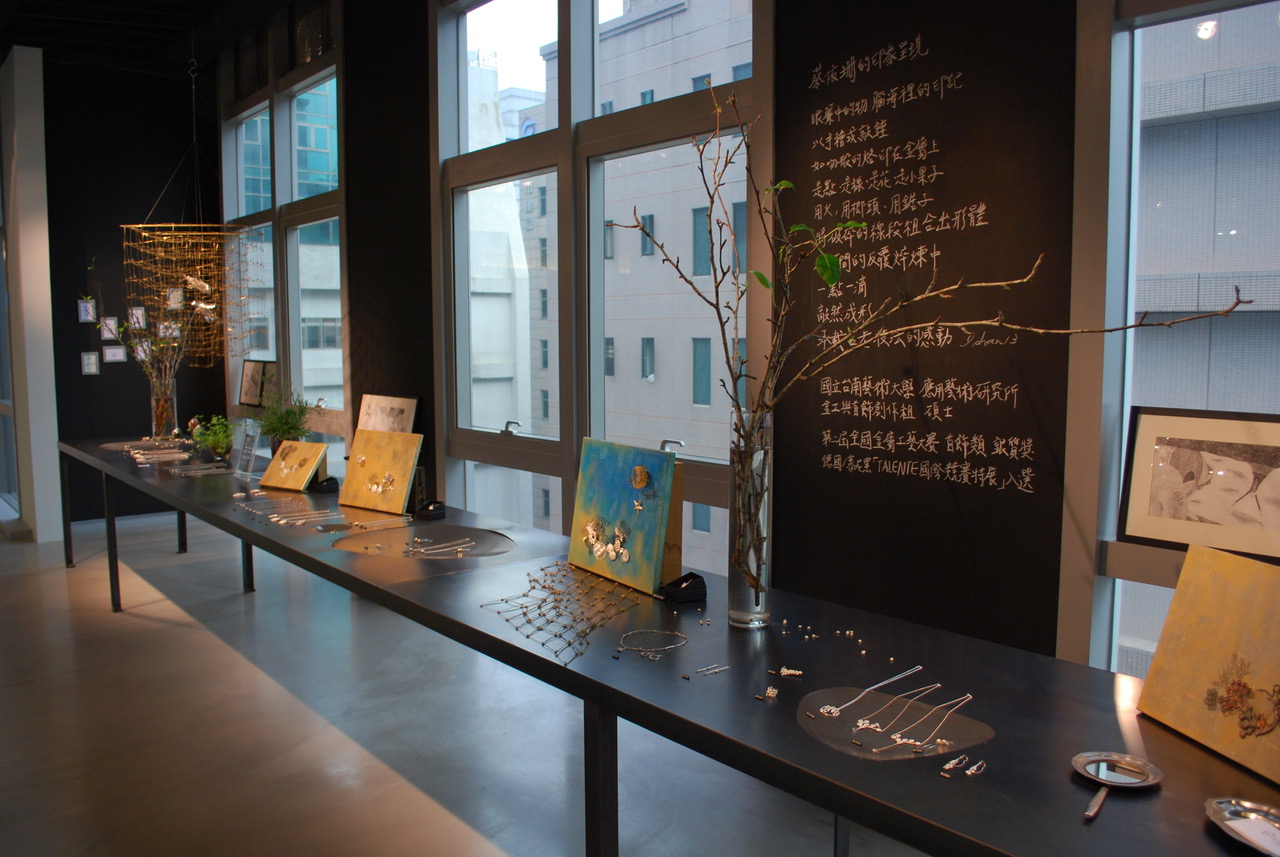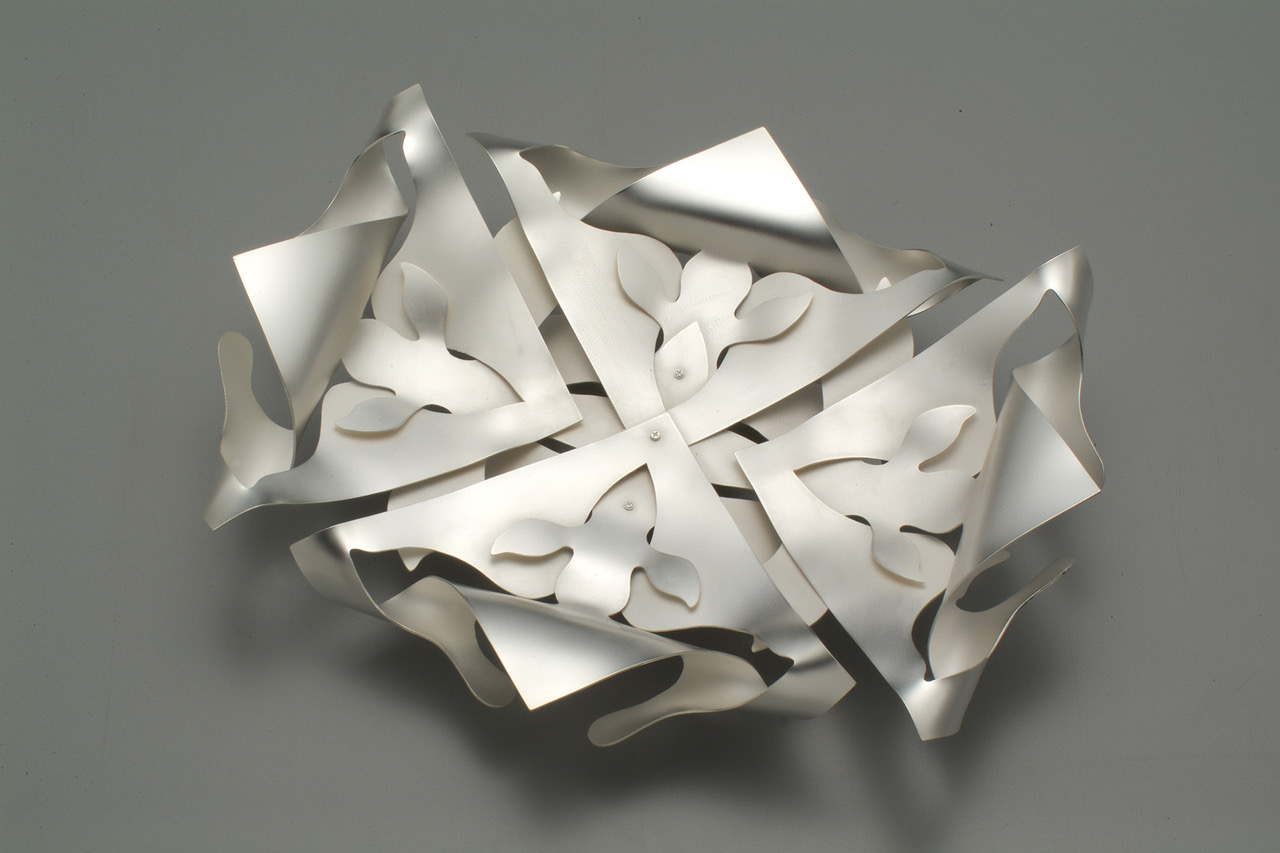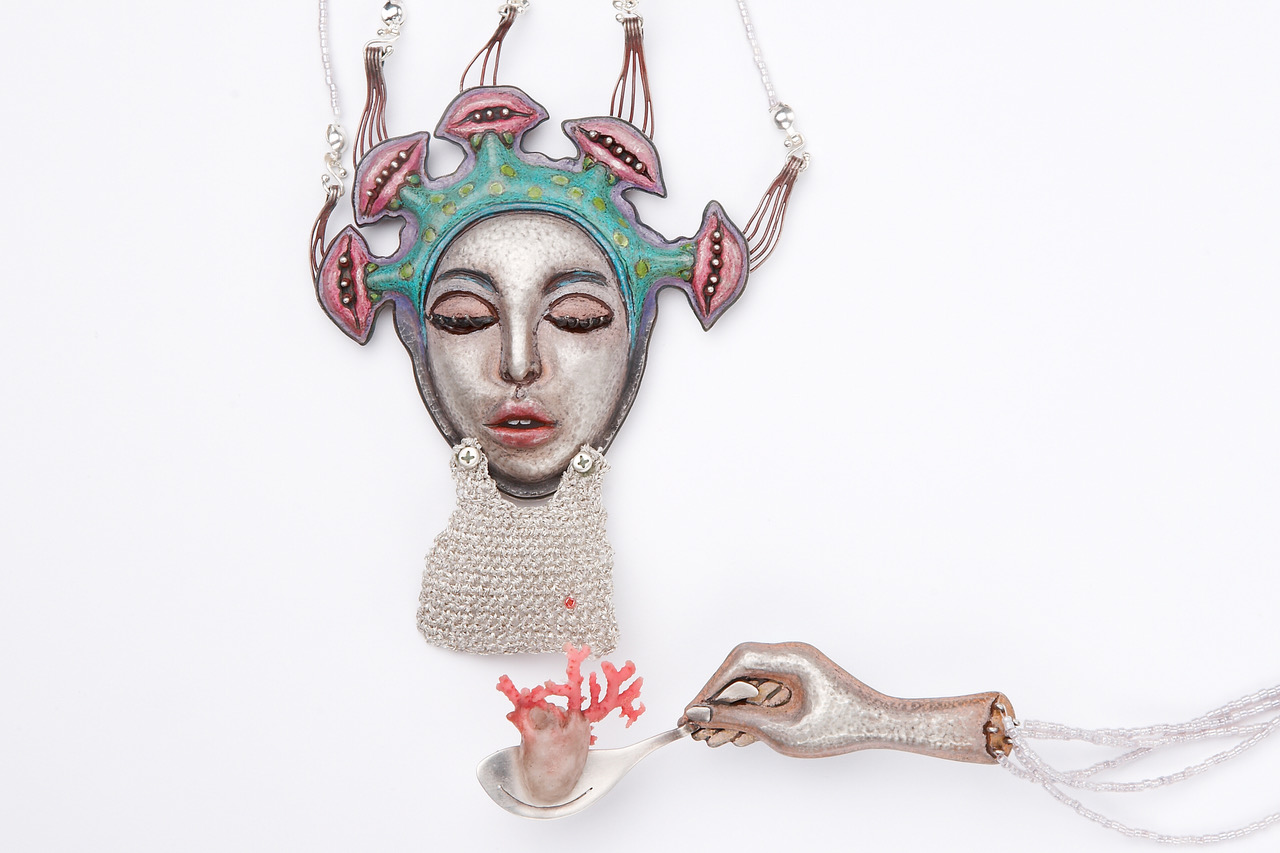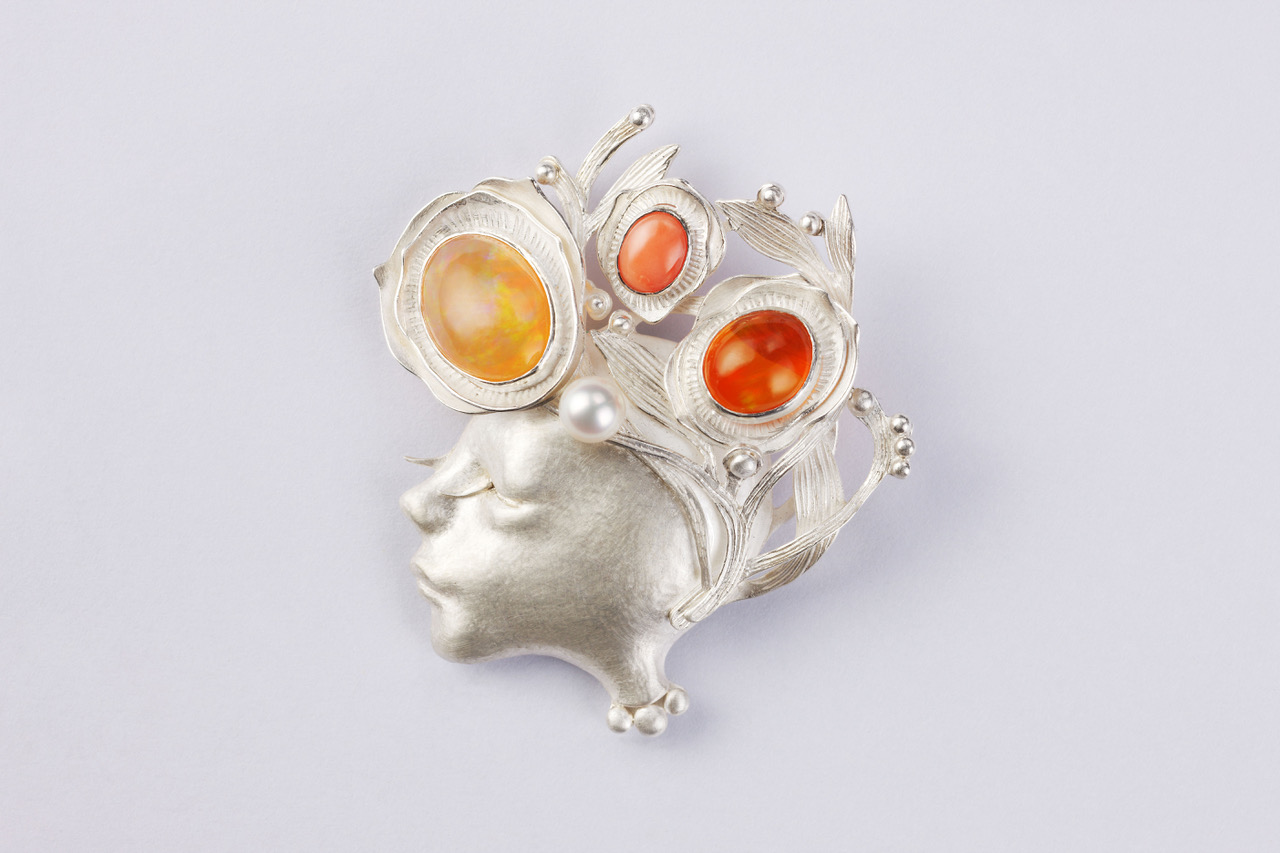Iam Yi-Shan Tsai, a metalsmith artist. I studiedart at Hsinchu Girls’ High School, and studied Fine Arts at National KaohsiungNormal University. After graduating, I worked as a teacher-in-training at ajunior high school. But after seeing a Georg Jensen exhibition, I becameinspired to learn metalwork. I therefore applied to the Graduate School of Jewelry and Metal Arts at the National Tainan University of the Arts. After getting mygraduate degree, I joined Xuexue Institute as a resident artist. I establishedmy brand I-Shan13 in 2010. I’ve been in the world of metal crafts for 18 years.

Duringmy residency at Xue xue institute, I held myfirst new product launch in 2010. Here, a display of my work.
WhenI was in college, I studied pure arts creation, including painting, engraving,graphic representation, design, computer graphics, integrated design, compositemedia, and sculpture. When I got into metalwork, the first challenge I facedwas having to work with metal – a completely unfamiliar material, and in a formthat was more about handicrafts than what I had worked with before. I wasstraddling the line between craft and fine art, not knowing how to take thenext step. For me, that was a huge test.
Learningto improve through competitions
During my studies, I oftenparticipated in competitions. From coloring and sketching competitions in mychildhood, to sachet and lantern-making competitions later on, I competed inmany arts-related competitions. As a child, I guess my parents and teachersfelt I was very talented, because they signed me up to compete in many suchevents. But once I got into high school and college, these competitions becamean opportunity for me to evaluate my work. I wanted to know if my work was goodenough, and I wanted to expand my worldview. My artwork might get first placein my class, but if I compared my work with those from other schools, would mywork still hold up? Would my work still stand out? If I entered aninternational competition, would I be competitive enough?
Competitionsare a good place to practice, be creative, and design your work on a theme and withina time limit. It’s a bit similar to class work, I suppose; but when you’re in acompetition, it feels more serious, because you have to create what you thinkis your most perfect work.
Duringmy first year in grad school, I participated in the German TALENTE craftcompetition and was lucky enough to be selected. The work I submitted was basedon a class exercise; the theme was “containers”. My teacher taught us the useof 3D software. Since I was unfamiliar with metal crafts, I had to learn tosaw, file, weld, and other technologies from scratch. After that, I cut andturned one-dimensional paper into a shape in 3D space; converted the materialto metal; then combined it to form a plate with a unique pattern.
Whenmy work was selected, I felt greatly encouraged. I felt deeply how my pastlearning experience gave me the grounding I needed for future creations. In2006, with my graduate department, I went to Germany for the first time toparticipate in the exhibition and saw works from all over the world.

First-year grad school work. The decorative plate series was selected forthe 2006 German TALENTE competition.
During the learning process,participation in various competitions is a good opportunity to practice yourcraft. In addition to testing the level of your creativity, you can alsobroaden your horizons. Here are a few tips to make competitions a littlesmoother:
1. Finda professional photographer to shoot your work. This will elevate your work’s aestheticsand evaluations.
2. When filling out competition materials,make sure to use accurate English. If you need to translate your creativestatement, get professional translation help.
3. The work that you’re entering shouldmeet your standards, and express a complete creative concept. If you’reuncertain about what you’ve produced, ask a teacher or classmate for advice. Askyourself 10 questions about your work and see if you can answer themcompletely.
Craft: A creative labor that combinestechnology with aesthetics
The meaning of “craft” – gongyi in Mandarin – is toproduce art (yi) through work (gong).
Craftcan be understood as a creative labor that combines technology, talent, skill,plastic arts, and aesthetics. It aims to make practical objects with artisticand aesthetic value – to reflect human emotions, reason, artistic andscientific spirit. In crafts, the hands play a very important role. They are ourmost important tools we use in creating; they represent the power and value oflabor. Therefore, craft can be seen as a unique form of creation that combinestechnology and aesthetics. Trough the realization of different people'saesthetic values, it reflects both complexity and particularity.
Inmy second year of graduate school, I learned the chasingand repoussé techniques of metalworking. Topractice this technique, I decided to create a face – a realistic once. Butthis was a challenge, because I had not become familiar with sculpting duringcollege. I’d done busts before, but they were quite unsuccessful. I spent a lotof time doing repoussé and chasing the face; I used a mirror and plaster to sculptmy own face as a reference. This gave me a sense of how to simulate the curves,dents, and spaces of my face, through both visual and tactile senses. I finallycompleted an expressionless but realistic work of a face.
That whole semester, I completed two works, but it was onlythrough constant, daily hammering.
So I want to ask a very simple question: How much time do youspend on your craftwork?

Work: Aportion of In So-called Doubt; copper, glass, tracing paper, transparentfilm, 2007.

Work: A portion of Heart-Eater; silver, beads, coral,wax, tracing paper, 2008.
Learnby doing: Create your own style and characteristics
When I teach basic metalwork courses,my students often ask me: "What else can I learn after I’ve learned thebasics?" They seem to think that only after learning all the techniquescan they be regarded as good at metalwork. However, they are overlooking themost important aspect – the significance of doing. Learning by doing isvery important.
I’ve given students an exercise inwhich I asked them to find a work and imitate it. They usually encounter a lotof problems. What they see is the image of a completed work, but they don’t seehow it was constructed, nor what the picture keeps hidden. When they reach thispoint, the students need to go find the answers and understand the wholeprocess. This is a great way to practice basic crafting.
Theskills of our predecessors were exquisite; they took their skills to theextremes. In comparison, we’re just jacks of all trades. We have a long way togo to become masters; it will require continuous technical practice and labor.
Thisdoes not mean copying or imitating. Rather, it means learning through theprocess of imitation, and even generating new ideas. That way, we can evaluatewhat level our own hands can rise to.

Custom-created work: Dimia, the Forest Nymph; sterlingsilver, gemstones, pearls, 2015.
In an era full of challenges anduncertainties, we need to reexamine how to find value in people-oriented crafts.Learning and creation are no longer singular forms; they require us toconstantly adjust and reflect. In the process of learning crafts, we not onlyneed to learn the techniques, but also to understand the cultures and valuesbehind them. When you can master one technique, you will be able to understandits essence more deeply and develop your style more fully. Since establishing mybrand, what I have done most is polishing – a boring, repetitive act. However,I believe that if I take the work seriously, and invest time and energy, theresults will eventually be seen in my work. I hope this article brings you somesmall amount of inspiration.





